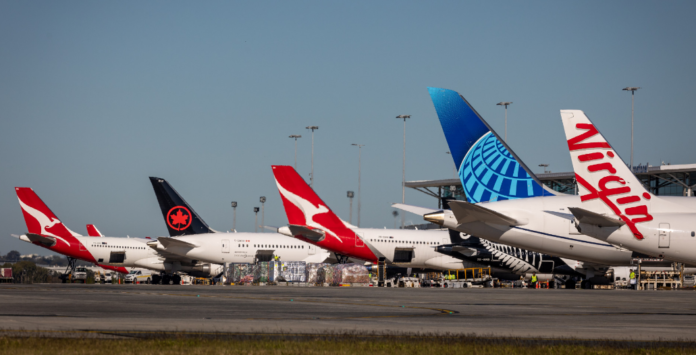Have you ever wondered how airlines manage to stay profitable while offering a range of services at different price points?
Let’s take a deep dive into the fascinating world of airline economics and seating strategies to understand how these complex businesses operate.
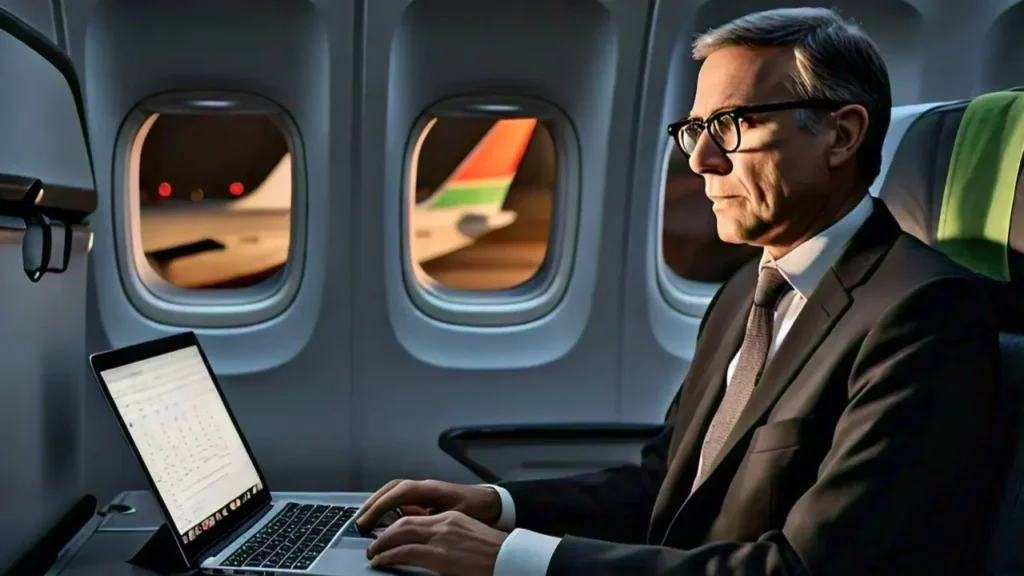
How 10-Hour Flight Make Money?
Airlines have perfected the art of maximizing revenue through strategic seating arrangements. A typical long-haul aircraft is divided into four main sections:
- First Class: The lap of luxury
- Business Class: Comfort meets productivity
- Premium Economy: A step up from standard
- Economy: The budget-friendly option
Interestingly, while first class, business class, and premium economy combined take up less than half the plane, they generate most of the revenue. This seemingly counterintuitive approach is a carefully calculated strategy.
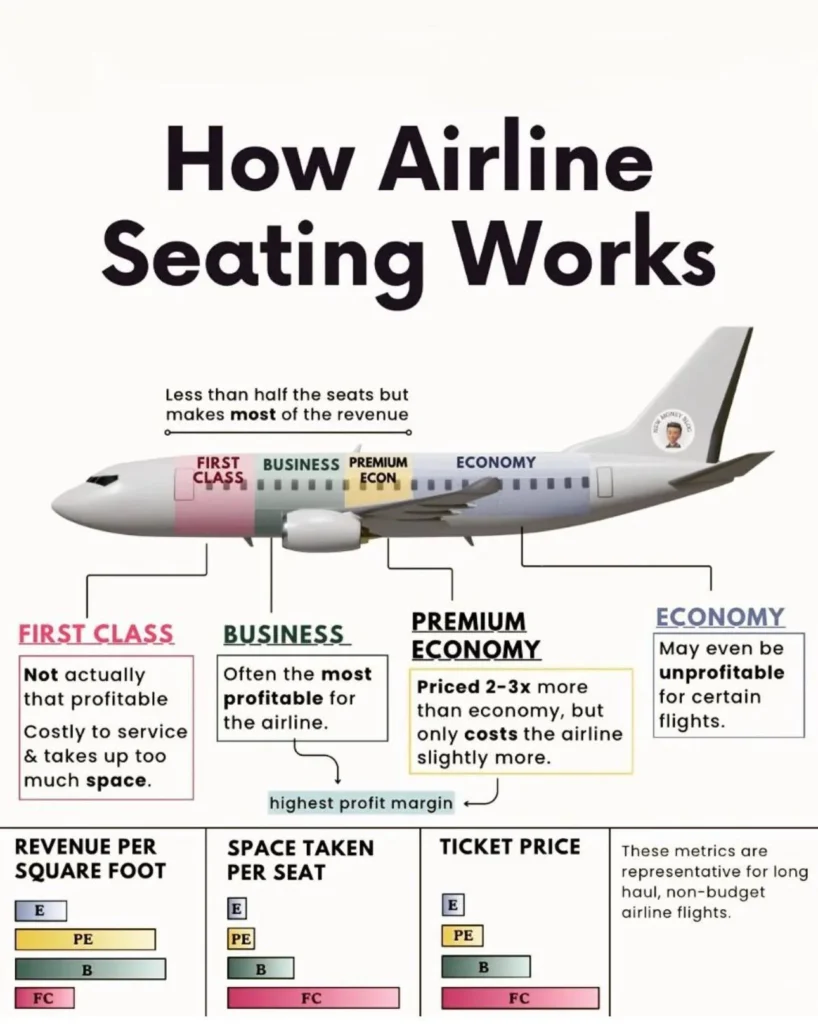
Breaking Down the Cabin Classes
- First Class: Not as profitable as you might think
- Costly to service and takes up significant space
- Often more about prestige than profit
- Business Class: The Golden Goose
- Usually the most profitable section for airlines
- Offers the highest profit margin per square foot
- Premium Economy: The smart upsell
- Priced 2-3 times higher than the economy
- Only costs the airline slightly more to provide
- Economy: The backbone of air travel
- Maybe unprofitable on certain routes
- Essential for filling planes and covering basic costs
Revenue vs. Space: A Delicate Balance
The profitability of each class becomes clear when we look at three key metrics:
- Revenue per square foot: Business class leads, followed closely by premium economy
- Space taken per seat: First class is the most spacious, economy is the most compact
- Ticket price: First class commands the highest fares but at a cost to the airline
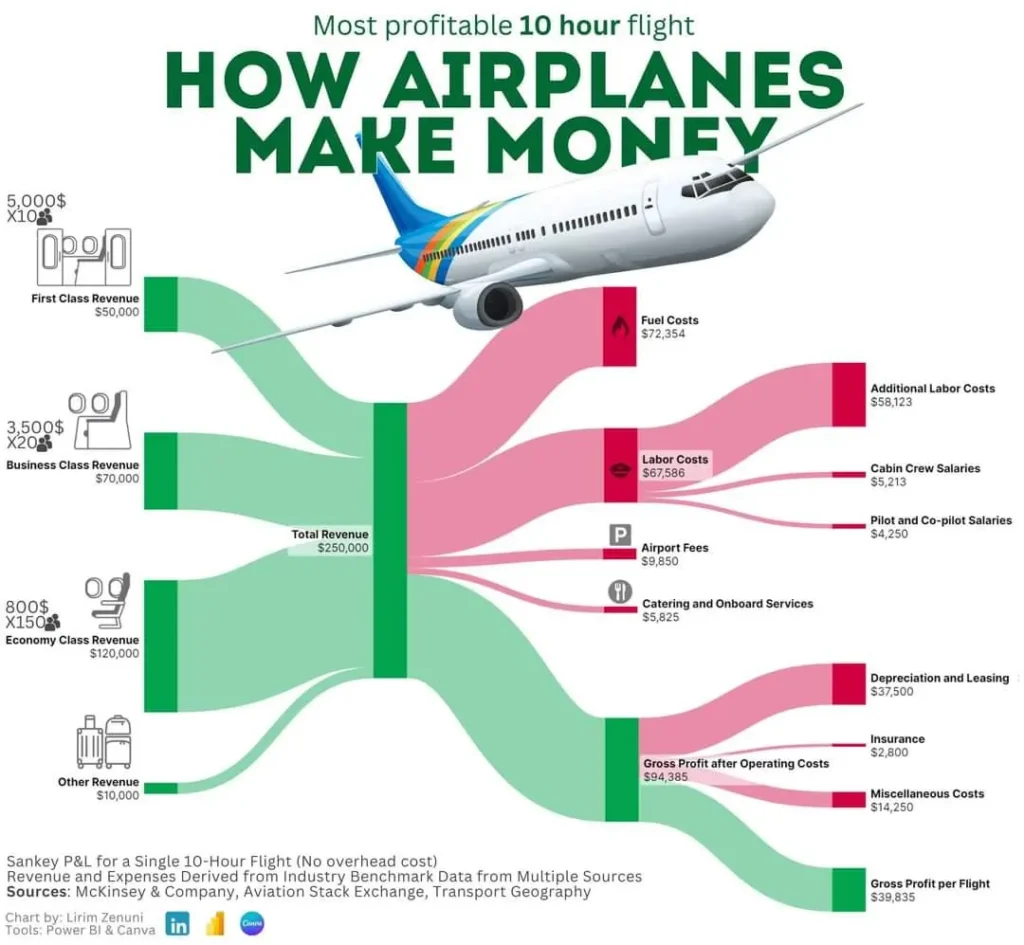
The 10-Hour Flight Example
Let’s examine a typical 10-hour flight to see how the numbers stack up:
Total Revenue: $250,000
- First Class (10 seats): $50,000
- Business Class (20 seats): $70,000
- Economy Class (150 seats): $120,000
- Other Revenue: $10,000
Major Expenses:
- Fuel Costs: $72,354
- Labor Costs: $67,586
- Depreciation and Leasing: $37,500
- Airport Fees: $9,850
- Catering and Onboard Services: $5,825
- Insurance: $2,800
- Miscellaneous Costs: $14,250
Total Costs: $210,165
Gross Profit: $39,835 (about 16% of revenue)
Also Read: US Airlines With the Most and Least Legroom in 2024 – Aviation A2Z
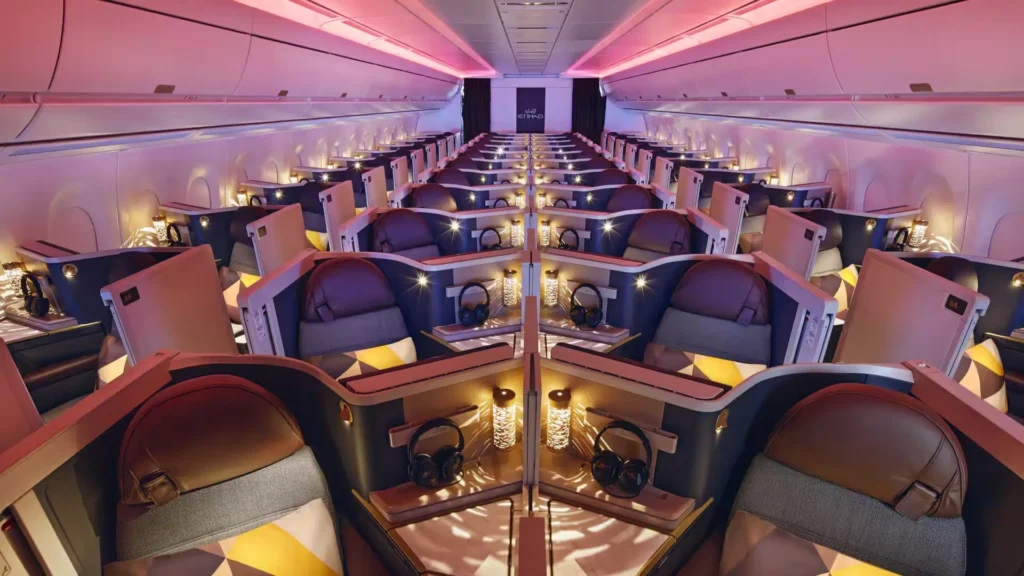
The Profitability Challenge
Airlines operate on surprisingly thin margins. To break even, they typically need to achieve a load factor (percentage of occupied seats) of 70-80%. This explains why you might find yourself on a crowded plane even when ticket prices seem high.
Strategies for Success
- Dynamic pricing: Airlines adjust ticket prices based on demand, time of purchase, and competitor rates.
- Ancillary revenue: Additional fees for baggage, seat selection, and in-flight purchases boost the bottom line.
- Fuel efficiency: Airlines invest in modern, fuel-efficient aircraft to reduce their largest expense.
- Route optimization: Carefully selecting and scheduling routes to maximize aircraft utilization and profitability.
- Loyalty programs: Encouraging repeat business and partnerships with credit card companies for additional revenue.
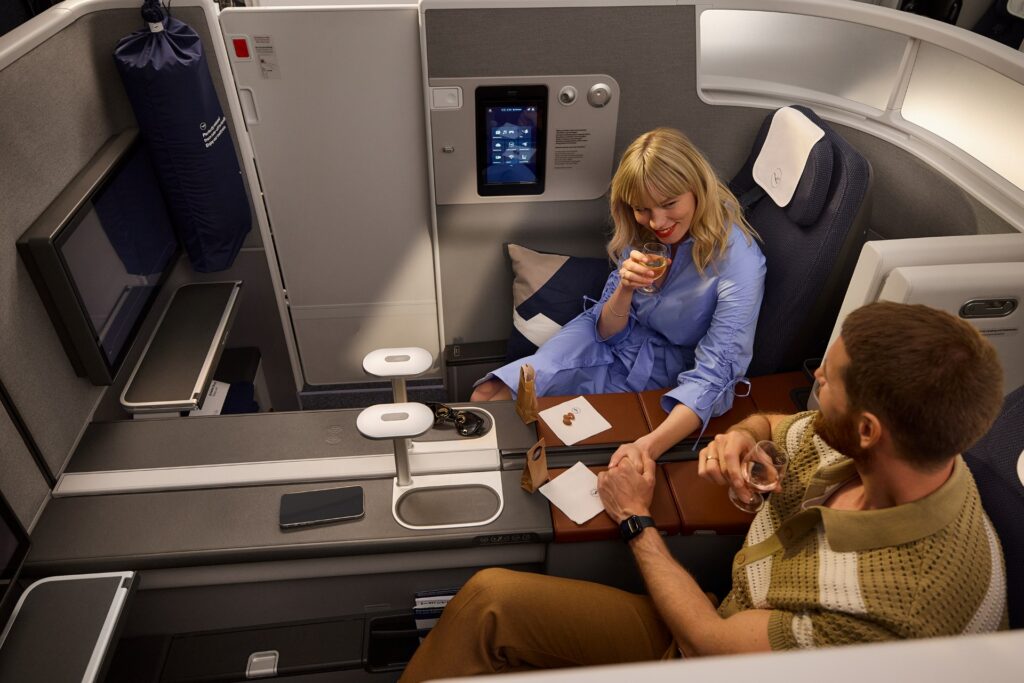
Bottom Line
The airline industry operates on a complex economic model where every square foot of space and every dollar of revenue counts. By strategically allocating space to different cabin classes and carefully managing costs, airlines can turn a profit despite the enormous expenses involved in keeping planes in the sky.
Next time you board a flight, take a moment to appreciate the economic ballet playing out around you. From the premium passengers up front to the budget travelers in the back, every seat plays a crucial role in keeping the airline industry aloft.
Join us on Telegram Group for the Latest Aviation Updates. Subsequently, follow us on Google News.
The post How 10-Hour Flight Make Money? Everything You Need to Know appeared first on Aviation A2Z.

